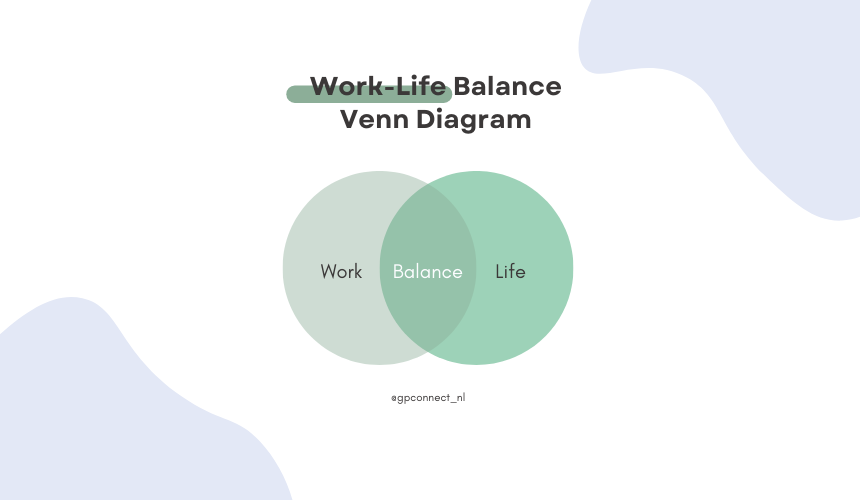Not long ago, having a work-life balance meant being able to leave the office at a convenient time. Some people liked to spend more time with their families, while others went to the gym or meeting with friends. In recent years, some companies started offering flexible work arrangements in an effort to attract new employees.
The outbreak of the COVID-19 pandemic and the lockdowns made it harder for many people to maintain a balance. For instance, many hospitality workers couldn’t actually work in the office or in their own houses. While the daily commute has been replaced by other tasks, work hours are still unpredictable.
This article will look at 5 ways to improve work-life balance.
What is work-life balance?
In recent years, the term has been under increasing scrutiny due to the idea that our personal and work lives are constantly being fought for. According to Berkeley Haas, this suggests that we might be reinforcing unhealthy concepts about how we view ourselves when it comes to both our personal and professional lives.
In response, we have begun advocating instead for the term work-life integration, or the synergistic blending of our personal and professional responsibilities. From this perspective, work is simply one of the numerous aspects of our lives. This needs to be considered alongside other important concerns, such as our home and family lives, and our personal well-being. Supporters argue that each of these feeds one another and that each is subsequently necessary for us to thrive.
Why is it so important?
Improving our work-life balance has been shown to have a positive impact on your emotional and mental health.
Some studies have found that working long hours can lead to such serious health issues as “impaired sleep, depression, heavy drinking, diabetes, impaired memory, and heart disease”. Unfortunately, as these conditions arise they can also exacerbate our work-life issues, which in turn can exacerbate the conditions themselves; thus, leading to a vicious cycle.
While employers and employees might associate long working hours with increased productivity, many researchers say otherwise. If your work is so important that you want to spend a lot of time, you are doing something wrong. Or at least you aren’t doing it right. And you should probably stop doing this. A study found that after a certain number of hours, productivity began to decrease while the potential for mistakes and injuries increased.
As a result, achieving a healthy work-life balance can potentially reduce stress and improve emotional states. But also increase overall productivity and employers’ bottom line.

How to improve your work-life balance
Step 1: Take scheduled breaks throughout the day
It’s very useful to structure the working day to include several scheduled breaks. While most of us like to multitask, breaks are mandatory. Taking breaks reduces the chances of being distracted by colleagues, family, or tasks such as housework during allotted work time.
The majority of people can only sustain maximum concentration for 90 minutes. So, recharging with regular breaks is vital for ensuring continued productivity throughout the day.
Step 2: Pursue passions
Employees with excellent work-life balance know the importance of finding time to do the things they love. Whether it’s exercising, reading, painting, yoga, or spending time with their families.
Try to find one thing to do every day that restores creativity, brings enjoyment, and refreshes the mind.
Step 3: Prioritize the important things in life
Juggling a career and a personal life will inevitably involve some sacrifices. It isn’t possible to accommodate every family occasion, school event, or social activity alongside the work calendar.
But just as there are sometimes vitally essential meetings to attend at the office, some personal commitments should also be considered unacceptable. Decide which ones they are and don’t let any work commitments stand in the way.
Step 4: Keep to strict working hours
Whether it’s 9 am-5 pm or 7 am-3 pm, make a decision and stick to it. Once employees get into the habit of allowing their working day to impact their personal time in the evenings, it’s difficult to claw back a routine.
If you make a habit of answering emails at night, your colleagues will continue to expect you to do so. Instead, make sure your co-workers understand that you finish work at the same time every day and will not be available again until the following morning.
Step 5: Prioritize mental health and well-being
Now more than ever, it’s crucial to prioritize the well-being of the workforce. There’s a lot of noise on social media encouraging people to maximize their time in isolation by learning new skills or exercising more.
But at a time when many people are experiencing heightened anxiety and insecurities about the future, the top priority must be to look after mental health.
Conclusion
Work-life balance is not a single factor that can be determined by one’s hours worked or the amount of vacation time that one takes. It’s also about maintaining a healthy and happy personal life. To achieve this, make sure that you take the necessary steps to support yourself and your family.
You can now easily follow these steps and you will definitely see some changes in your work-life balance!
If you find yourself needing help in finding and managing employees contact us now!




